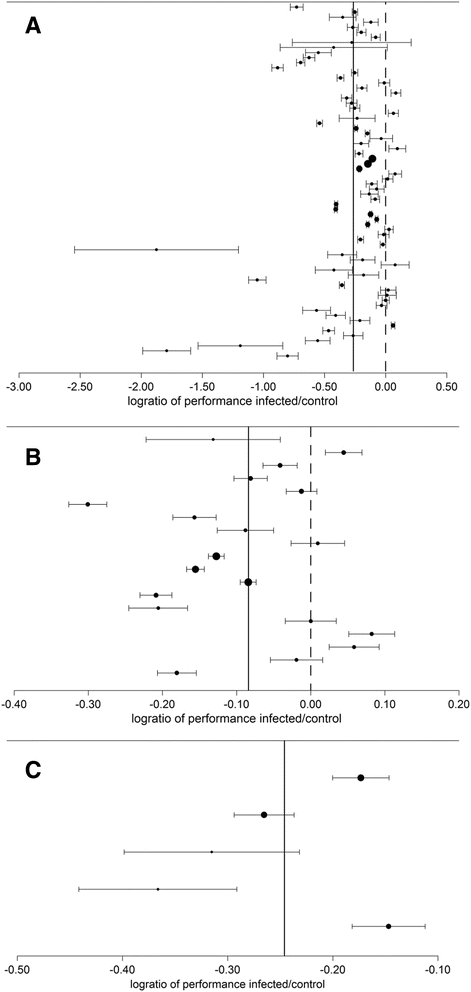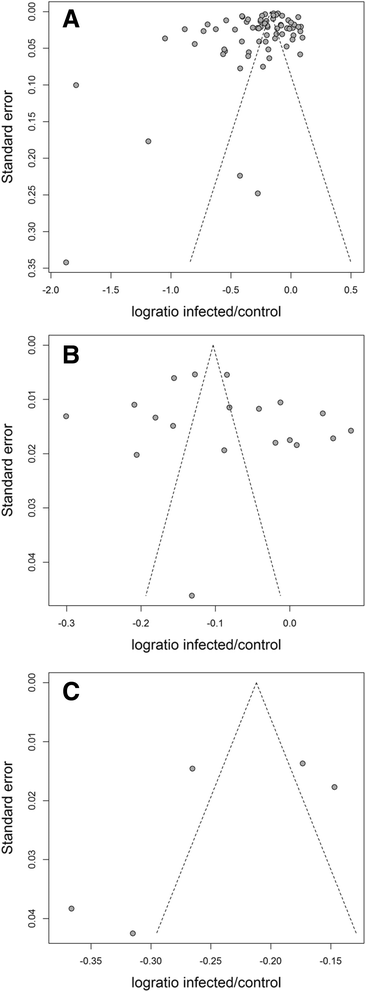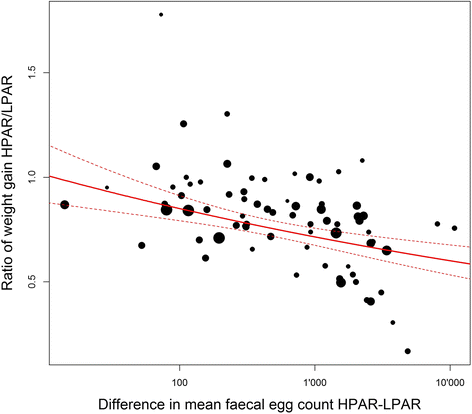Effect of gastro-intestinal nematode infection on sheep performance: a systematic review and meta-analysis
- PMID: 26496893
- PMCID: PMC4619485
- DOI: 10.1186/s13071-015-1164-z
Effect of gastro-intestinal nematode infection on sheep performance: a systematic review and meta-analysis
Abstract
Background: Gastrointestinal nematode (GIN) infections are common in domestic sheep and impact directly and indirectly on the health of infected animals as well as on the associated economic production. In this study, we aim at summarizing the current knowledge on the influence of GIN infections on sheep production by conducting a systematic review. A subsequent meta-analysis of relevant studies was performed to provide an estimate of the effect of GIN infections on weight gain, wool production and milk yield.
Methods: A literature search was performed on the CAB, Pubmed and Web of Science database for the period 1960-2012. Inclusion criteria were: 1) Measurement of at least one production parameter. 2) Comparison between groups of sheep with different nematode burdens. 3) Same conditions regarding all aspects except parasite burden between groups. 4) Quantitative measurements of one or more production traits.
Results: Altogether, 88 studies describing 218 trials were included in this review. The majority of studies (86%) reported that GIN infections had a negative effect on production but this was reported to be statistically significant in only 43% of the studies. Meta-analysis indicated that performances of sheep infected with nematodes was 85, 90 and 78% of the performance in uninfected individuals for weight gain, wool production and milk yield respectively. Our results suggest a possible reporting bias or small study effect for the estimation of the impact of GIN infections on weight gain. Finally, a general linear model provided an estimate for the decrease in weight gain in relation to the increase in faecal egg count of nematodes.
Conclusion: This study underlines the importance of GIN infections for sheep production and highlights the need to improve parasite management in sheep, in particular in face of challenges such as anthelmintic resistance.
Figures



References
-
- Pugh DG, Baird N. Sheep & goat medicine. USA: Elsevier Health Sciences; 2012.
Publication types
MeSH terms
Supplementary concepts
LinkOut - more resources
Full Text Sources
Other Literature Sources
Medical

